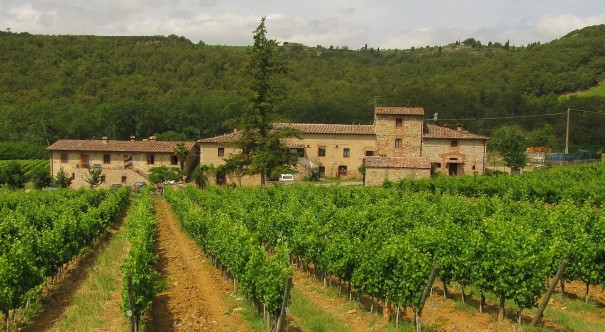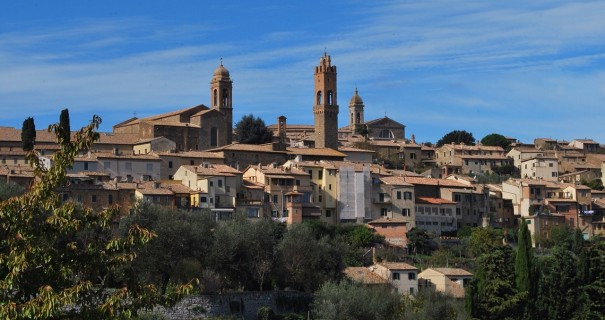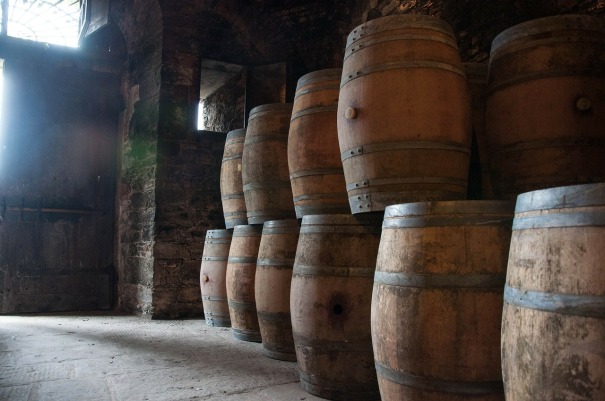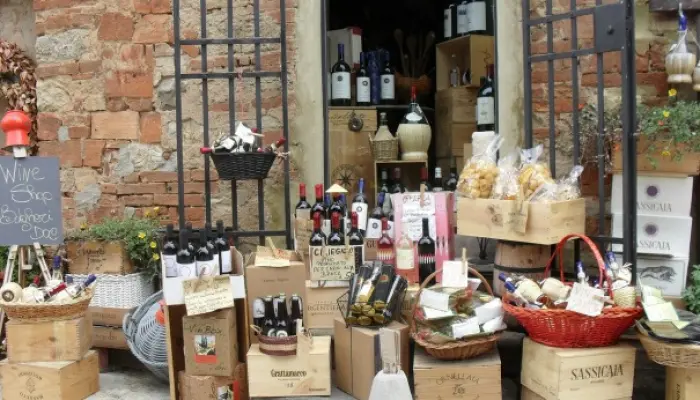Tuscany - an extensive region with ten provinces: Arezzo, Grosseto, Pisa, Siena, Livorno, Lucca, Massa and Carrara, Pistoia, Prato, and of course, Florence, where the capital of the region is located. The landscapes of Tuscany are so perfect that it is hard to find someone who is not enchanted by its sunny hills with vineyards, cypresses, and stone houses, enveloped in the aromas of wine, olive oil, and freshly baked bread. Enriched with medieval towns, even older traditions, and works of art from the Renaissance, it represents a dreamy combination of world-famous landmarks, impressive nature, colorful hues, and, not least, globally renowned cuisine offering endless opportunities for gastronomic delights.
Winemaking, Valuable Worldwide

When it comes to wine tours, Tuscany is not only one of the most famous regions but also the one with the oldest winemaking traditions in Italy. Wine enthusiasts will find themselves among numerous wineries located in central Italy, inviting them to immerse themselves in the captivating atmosphere of producing famous "Chianti," "Brunello di Montalcino," "Nobile di Montepulciano," "Carmignano," or white "Vernaccia di San Gimignano." Sangiovese is the predominant grape variety in Tuscany, cultivated since Roman times with numerous clones in different terroirs, making it present in almost all red wines of Tuscany, with its content and blending with other varieties classifying the wine differently.
What Are the Largest Wine Production Areas in Tuscany?

The largest DOCG (Denominazione di Origine Controllata e Guarantita) and DOC (Denominazione di Origine Controllata) zones in Tuscany are actually named after these famous wines, such as the Chianti wine zone - Chianti Classico DOCG, whose vineyards extend between Florence and Siena, and Chianti DOCG, which is larger and includes several DOC zones, including vineyards north and south of Chianti Classico, the area of Pisa, Arezzo, Rufina, and Pistoia. To bear the label "Chianti," the wine must contain at least 70% of the local Sangiovese grape variety, and to be a "Riserva," it must be aged for over 2 years.
Carmignano DOCG. These are the vineyards around the town of Carmignano, a few kilometers from Florence in the province of Prato, and the wine must contain at least 50% Sangiovese. Winemaking in this area dates back to the Roman Empire, and as early as the beginning of the 18th century, a special law defined the wine produced here among the 4 highest quality wines of Tuscany and effectively prohibited producers from other areas from using the name "Carmignano."
Brunello di Montalcino DOCG (Brunello di Montalcino) - vineyards in the area of the town of Montalcino are planted with the Brunello variety (which, again, is a clone of Sangiovese). This area was the first to receive DOCG status, and "Brunello di Montalcino" wine is distinguished by being made from 100% Brunello and aging for a long time (minimum 4 years) before hitting the market, making it one of the most expensive wines in Tuscany. Wine "Rosso di Montalcino" DOC is also produced in this area, which is aged for a shorter time, lighter, and therefore not as expensive.
Vino Nobile di Montepulciano DOCG (Vino Nobile di Montepulciano). Vineyards are located on the hills around the town of Montepulciano, and the wine produced here was one of the favorites among the aristocracy of Tuscany in past centuries. The local Sangiovese variety is called Prugnolo gentile, and "Nobile di Montepulciano" wine is aged for 2 years before appearing on the market and another year if the label says "Riserva."
Vernaccia di San Gimignano DOCG. Vineyards with the white Vernaccia variety occupy almost all the surroundings of the picturesque town of San Gimignano in the province of Siena, also known for its numerous towers. 14 towers have been preserved to this day, but in the Middle Ages, the most influential families of the town, rivaling due to the division into Guelphs and Ghibellines, competed to build the highest tower on their house, and thus, 72 towers were built. As for wine, "Vernaccia di San Gimignano" is considered the highest quality white wine in Tuscany.
Bolgheri DOC (Bolgheri). The area stretches around Livorno. Here, mostly so-called super Tuscan wines are produced, most of which do not fall under DOC and DOCG categories, but this does not make them any less worthy; on the contrary, some of them are actually among the most expensive in the market. Among them are wines like Sassicaia, Ornellaia, classified as IGT (Indicazione Geografica Tipica). These are usually blended wines, in which besides (or instead of) local Sangiovese, typical French varieties such as Cabernet Sauvignon, Merlot, and others are present.
What about Wine Tastings?

Wine tastings are a given in Tuscany, and in any local excursion or tour, you are almost certain to encounter them in some form, along with tastings of local cheeses, bruschetta drizzled with local olive oil, balsamic vinegar, and other culinary delights. But if you're looking for a deeper immersion into the world of wine, it's most convenient to base yourself in one of the two major cities - Florence or Siena. This way, you can visit their numerous artistic and architectural landmarks and freely travel to nearby wineries or join on-site organized one-day wine tours throughout Tuscany (you can book online in advance).
From Florence, there are no less than 10 different types of tours departing, including wine tastings, the longest of which (about 11 hours) cover the areas of San Gimignano - Siena - Chianti Classico and Greve - Castellina - Montalcino - Montepulciano, where tastings of "Brunello di Montalcino" (one of the most expensive Tuscan DOCG wines), "Rosso di Montalcino," "Nobile di Montepulciano," Vin Santo (dessert wine), as well as super Tuscan wines are provided. Another wine route that can be taken from Florence includes Siena - Monteriggioni - San Gimignano - Pisa, during which you can taste "Chianti" and white "Vernaccia di San Gimignano." One of the entertaining tours is a wine tour on Fiat 500, during which the participant drives through the Tuscan hills and vineyards, reaching a traditional family winery. From Siena, tours such as "Chianti and San Gimignano," "Grand Brunello," and others depart. And if you stay in San Gimignano, besides local tastings of "Vernaccia," you can also join the "Brunello di Montalcino" tour.
Thus, Tuscany offers a wide range of wine tours, allowing you to immerse yourself in the world of winemaking and enjoy the richness of Tuscan culture and cuisine.
